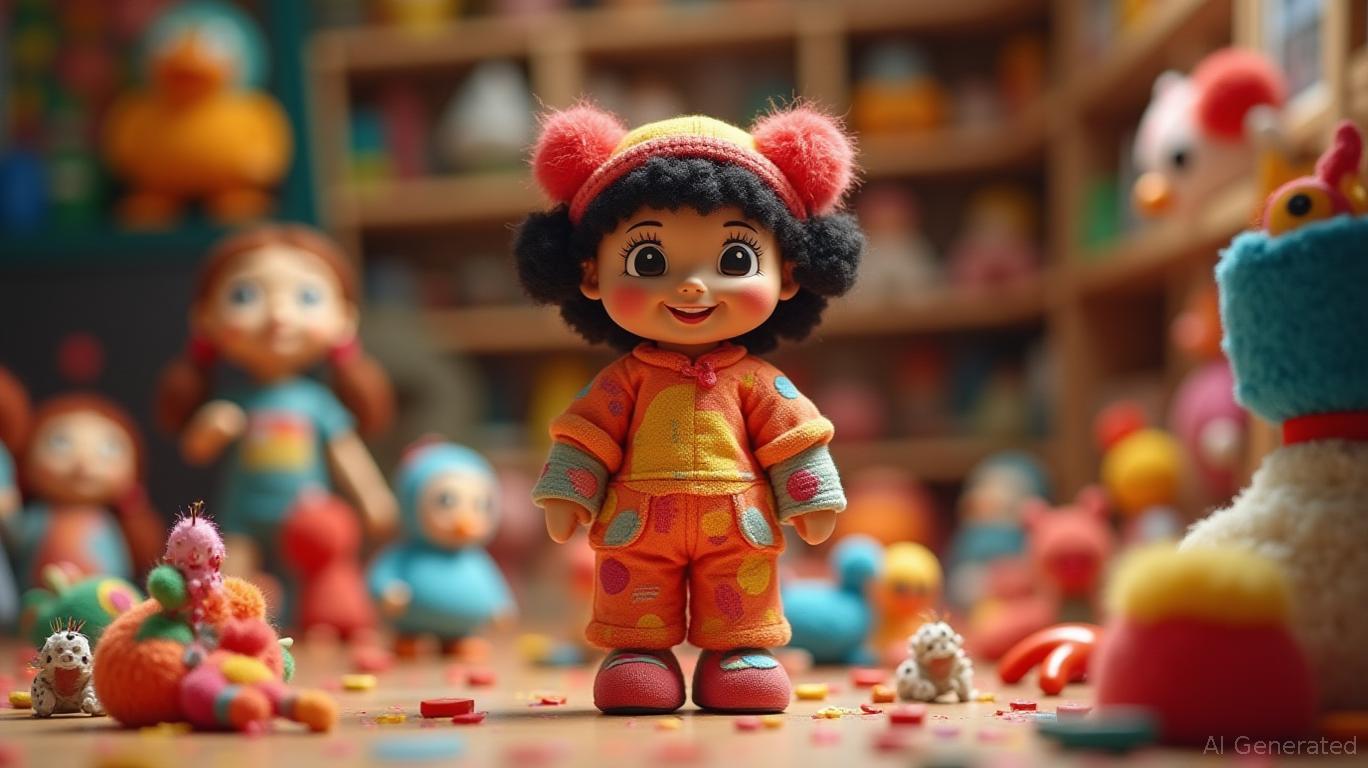Blind-Box Toys: Navigating Regulatory Headwinds to Seize Global Growth
The blind-box toy market, exemplified by Pop Mart's iconic Labubu and Molly collectibles, has become a cultural phenomenon. Yet, its rapid ascent faces growing scrutiny from regulators worldwide. How are companies like Labubu Maker (Pop Mart, HK:09992) balancing short-term compliance challenges with long-term ambitions to dominate global markets? The answer lies in their ability to adapt to evolving regulations while leveraging brand equity and strategic expansion.

Regulatory Crossroads: Short-Term Risks
Regulatory pressures are mounting globally. In China, the birthplace of the blind-box boom, state media has called for stricter controls on “mystery box” sales to minors. The government already prohibits sales to children under eight, citing concerns over addictive purchasing behavior. This has led to temporary dips in Pop Mart's stock—its shares fell 6.2% in June 2025 amid regulatory speculation—even as its year-to-date gains remained robust at 170%.
The EU's new Toy Safety Regulation (TSR), set to replace the Toy Safety Directive by late 2027, introduces stringent requirements. Key changes include:
- Digital Product Passports (DPP): Mandating electronic safety documentation for all toys.
- Chemical Bans: Prohibiting PFAS, bisphenols, and stricter limits on heavy metals.
- Age Restrictions: Clear pictograms for age-appropriate use.
While these rules aim to enhance safety, they raise compliance costs. SMEs in the EU, already facing a 30-month transition period, may struggle to adapt, creating an opening for larger firms like
to consolidate market share.In the U.S., the focus remains on counterfeit crackdowns. The North American market, valued at $5.9 billion in 2025, is projected to grow at a 6% CAGR, driven by collectible demand. However, the Federal Trade Commission (FTC) and Consumer Product Safety Commission (CPSC) are monitoring misleading marketing practices, particularly around limited-edition releases that drive speculative trading.
Long-Term Catalysts: Brand Equity and Global Ambitions
Despite near-term turbulence, blind-box toys thrive on emotional resonance and community-building. Pop Mart's success stems from its ability to create IP-driven ecosystems—like its collaboration with The Beatles for a 60th-anniversary collectible series—that foster loyalty among adult collectors. This brand equity acts as a moat against regulatory headwinds.
Global Expansion is another lever. While China remains the core market (contributing 60% of Pop Mart's revenue), Europe and the U.S. offer untapped potential. In the EU, the blind-box segment is projected to grow at 6.15% CAGR to $5.3 billion by 2033. Pop Mart's entry into Germany and France, supported by localized marketing and compliance teams, positions it to capitalize on this trend.
The U.S. market, led by brands like Funko and Kidrobot, is ripe for innovation. Pop Mart's planned 2026 launch of “MetaBlind”—a blockchain-enabled collectible platform—aims to merge physical toys with digital ownership, addressing regulatory concerns while appealing to Gen Z's preference for hybrid experiences.
Investment Considerations: Ride the Volatility, Bet on Adaptability
Investors must weigh the risks against the sector's structural tailwinds. Key takeaways:
1. Regulatory Resilience: Companies with strong compliance frameworks—like Pop Mart's preemptive DPP rollout in the EU—will outperform.
2. Brand Strength: IP-rich portfolios (e.g., Pop Mart's 200+ licensed characters) reduce reliance on any single product.
3. Geographic Diversification: Exposure to high-growth regions like the EU and U.S. mitigates China-specific risks.
Conclusion: A Market Built to Last
The blind-box toy industry is at a pivotal juncture. Regulatory hurdles are real, but they are not insurmountable. Companies that invest in compliance, innovate to stay ahead of trends, and leverage global brand equity will turn today's challenges into tomorrow's advantages. For investors, the volatility creates opportunities to buy into long-term winners like Pop Mart—provided they remain mindful of short-term risks and patient enough to ride the cycle.
Investment Thesis: Hold or accumulate shares of companies like Pop Mart (HK:09992) on dips below HK$45, targeting a 2026 price target of HK$60. Pair with exposure to EU compliance leaders and U.S. innovators to balance geographic risk.
The blind-box boom isn't over—it's evolving. Those who adapt will lead the next chapter.

Comments
No comments yet